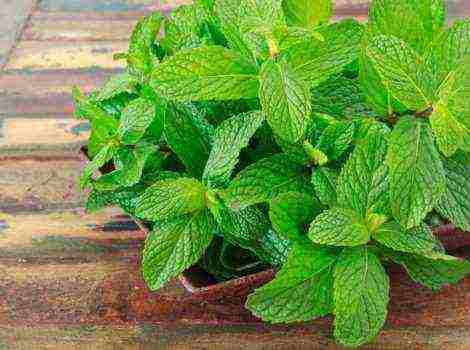Content
Dahlias popular with gardeners, despite their height, can be grown at home in pots. But at the same time, you need to take into account the specifics of growing and select the appropriate varieties.
Choosing a dahlia variety that is suitable for growing in pots
For planting dahlias at home or on the balcony, varieties with a small root system are selected. Special varieties of indoor low-growing dahlias have been developed - for growing in pots at home. These are pot-dahlias, miniature dahlias, etc. But you can also grow high varieties. It is important to choose the right container for planting and take care of the support if the flower has grown to 85-90 cm.

Pot selection
Indoor dahlias can be planted in plastic containers, wooden, wicker, clay, different sizes. What's better?
What container to use
In plastic containers, overheating of the soil is possible, the access of oxygen to the roots is reduced. Wicker baskets do not have these drawbacks, but they are usually short-lived. Wooden boxes are comfortable for flowers, but not decorative enough for a room or balcony. For attractiveness, they can be painted, but then air permeability is impaired. In a clay or ceramic pot, the roots of dahlias do not lack oxygen. These pots are attractive and durable.
I need to find a big pot
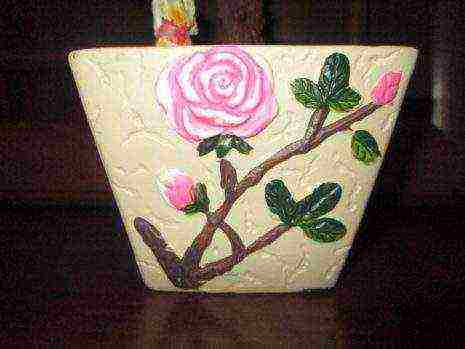
To plant a dahlia, you need a large pot. When choosing a volume, you should take into account the dimensions of the flowers. The size of the root system for low varieties requires a capacity of 4-5 liters. Medium-sized dahlias will feel comfortable in pots of 7-8 liters. For flowers with a height of more than 90 cm, 10 liters or more will be required.
Better to choose a heavy pot
The pot must be heavy. An adult dahlia requires a stable support, so plastic or wicker containers are not suitable. A thick-walled clay pot is able to provide the stability of the flower.
Drilling holes
Dahlias do not tolerate excess moisture. If the water stagnates in the pot after watering, the roots will die due to the lack of oxygen. It is necessary to ensure the outflow of water through the drainage holes. If there is only one drain hole, several more need to be drilled to improve drainage.
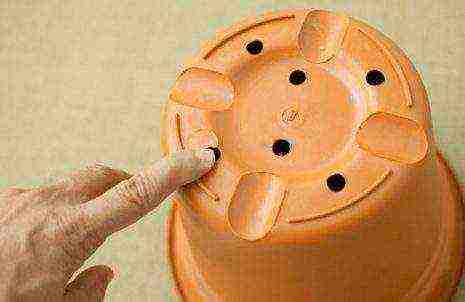
Why is it necessary to rinse the pot thoroughly?
When using used pots, they must be pre-treated. Clay can contain microorganisms, insect eggs, fungi, accumulate salts, etc. Therefore, before use, the pot should be thoroughly washed with soap and water and disinfected with a chlorine-free product.
Coarse soil mix
Dahlias are demanding on the quality of the soil. You can buy ready-made soil mix or mix it yourself. The soil should be coarse, loosened to provide air access to the roots. Peat, humus, sand are added to it. Experienced growers advise mixing perlite, hygroscopic granules of which remove excess moisture from the soil.
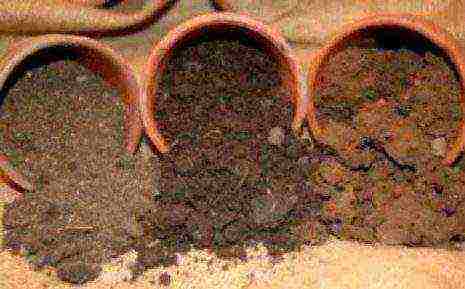
Landing
It is important to correctly determine the timing of planting so as not to spoil the planting material.
Landing dates
If the pots are in an apartment or on a heated balcony, then tubers can be planted as early as late March - early April. If the pots are planned to be exposed to the open air (on the porch, in the garden or on the open balcony), then it is better to wait until May, when even at night it will be at least 120C.
Potted dahlias begin to bloom about 45-50 days after planting. This period can be reduced by providing the plants with warmth and sunlight.
Filling the pot
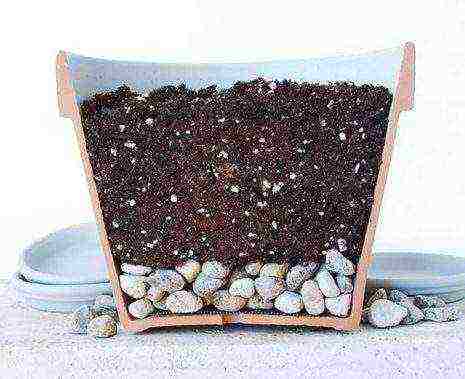
When filling the pot, pay particular attention to the drainage layer.
ADVICE!
Experienced growers advise placing one or two coffee filters on the bottom of the pot. They absorb moisture well and block the drainage holes, blocking them from pests.
You can add gravel to the bottom of the pot. The height of the drainage layer is about 15 cm. The drainage holes must remain free to allow water to drain out. Soil is poured onto the drainage. The height of the soil depends on the pot - about 20 cm should be left to the top edge.
The tubers are planted to a depth of about 15 cm. After planting, germination and backfilling of the tubers, the distance from the ground to the edge of the pot should be at least 2 cm. The backfilled soil is moistened and slightly crushed - the ground should be loose.
Planting tubers

Tubers with short roots should be planted. If the roots are allowed to elongate, they will intertwine and be damaged when untangled. Root restoration will delay the growth and flowering of the dahlia.
The tuber is laid on the ground with the eye upwards so that the stem can grow unhindered. It is desirable that the sprout is located approximately in the center of the pot, and the distance from the ends of the roots to the wall of the pot is at least 5-6 mm.
The tuber is sprinkled with moistened soil, you do not need to fill up the peephole. As the stem emerges and grows, the soil is added, but very carefully so as not to damage the delicate sprout. The addition of soil continues until the distance to the edge of the pot decreases to 2-3 cm.
The pot with the planted dahlia is placed in a warm, bright place protected from the wind. Slight shading is possible in the evening.
Watering the soil
 You may be interested in:
You may be interested in:
For planting, the soil is moistened. After planting, the dahlia does not require watering, the soil is only lightly sprinkled with warm water. Watering begins a few days later, after the formation of absorbent roots.
Fertilizers
For rapid growth and lush flowering, flowers require feeding. Dahlias respond well to fertilizers based on algae and fish, bone meal. You can buy a ready-to-use plant feed mixture at a specialty store.
Apply fertilizers with high nitrogen levels carefully. An excess of nitrogen leads to diseases of dahlias, they bloom poorly, tubers do not tolerate wintering well.
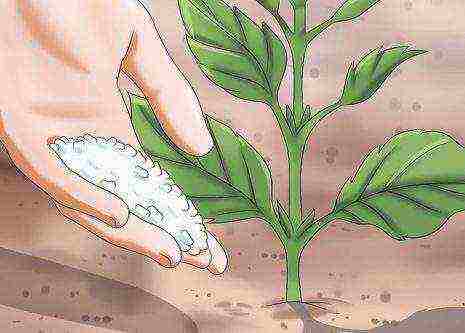
Inserting a stanchion and anchoring the stem
For flowers of medium to tall growth, additional support will be required so that the stem can support the weight of the flower. As a rule, the height of the support does not exceed 120 cm. The support must be stable - it is inserted into the ground to the very bottom and, if necessary, additionally attached to the pot (for example, using a wire).
The stem is carefully tied to the support.
ADVICE!
Dahlias do not tolerate transplanting well, so experienced flower growers advise to immediately plant the tuber in a pot in which the flower will grow.
Care
Caring for potted dahlias is simple and includes:
- watering,
- loosening of the soil,
- top dressing,
- protection from diseases and pests.
If potted dahlias grow in the open air (on an open balcony, veranda, porch), then in adverse weather conditions they are simply temporarily brought into the room.
Watering the stem and soil
Dahlias do not tolerate excess moisture. Watering frequency depends on the weather. This is usually two to three times a week. If it's cool, just once is enough, depending on the condition of the soil.In dry and hot weather, you can water daily without allowing moisture to stagnate.
ADVICE!
After watering, it is necessary to loosen the soil. Otherwise, a dried earth crust is formed, which does not allow oxygen to pass to the roots.
Lighting
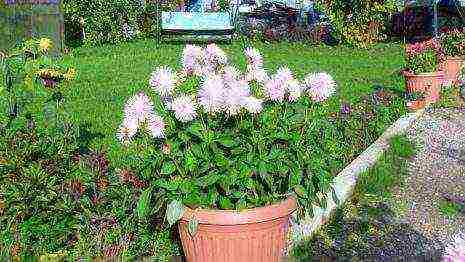
Dahlias love sunlight. For high-quality growth and flowering, they need about 6-8 hours to be in direct sunlight. If the pots are on the balcony, choose the sunniest place for them. If dahlias are growing in a room, then it is useful to make up for the lack of sunlight with fluorescent lamps. The lamp can be installed immediately after planting at a level of 15 cm above the ground. As the dahlia grows, the lamp rises.
Fertilizer timing
Dahlias need a lot of potassium and phosphorus, to a lesser extent - nitrogen. Top dressing begins in June. Fertilizers are applied every two weeks when watering. Overfeeding with fertilizers should be avoided. Top dressing continues until September.
Removing the lower leaves
Around mid-July, the lower leaves are removed from the stem to improve air circulation. It also protects plants from powdery mildew disease.
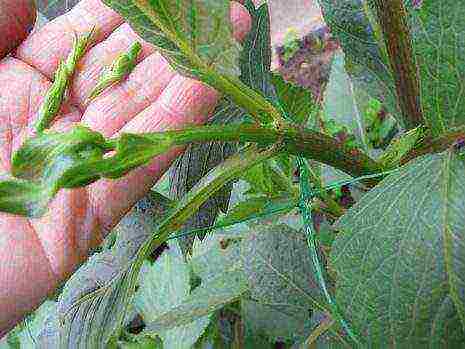
Spraying with insecticide and fungicide
To protect against pests, potted dahlias are treated with a fungicide or insecticide twice a month.
Pests and methods of dealing with them
Yellowed and curled leaves are a signal of the appearance of aphids. If the colonies are single, then the damaged leaves are simply removed. In case of severe infection, an insecticide treatment is necessary.
Slugs gnaw through or completely destroy the leaves. To combat them, metaldehyde preparations, superphosphate, red pepper are effective - they scatter on the ground.
Plant bugs cause leaf boring. To get rid of them, dahlias are sprayed with insecticide. The treatment is best done in the morning, when the bugs are inactive.
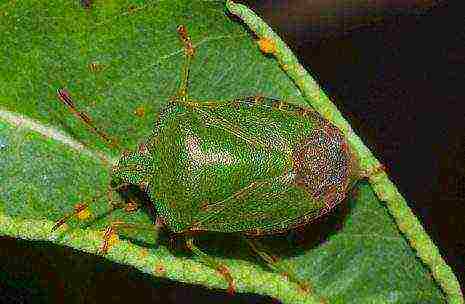
Earwigs spoil the buds, gnawing out their core. Watering once a week with a decoction of wormwood or celandine helps from earwigs.
When mold appears, fungicide treatment helps.
In case of a disease with powdery mildew, treatment with a preparation containing copper is necessary. Sulfur treatment can be applied.
Wintering dahlia
With the first autumn frosts, even if dahlias grow in the house, you need to think about winter rest. Before winter, the dahlia is cut, leaving 4-5 cm of the stem. The tubers can be dug up or left in the same pots in which they grew.
The dug tubers are carefully cleaned from the ground, treated with a solution of potassium permanganate of medium brightness and dried. They are stored in a cool dry place at an air temperature of about 50C. So that they do not dry out during storage, the tubers can be sprinkled with sawdust, sand, peat.
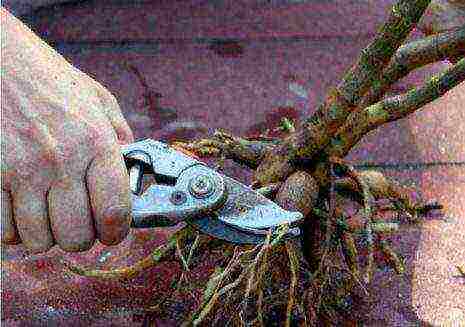
During wintering, protruding roots are cut off in a pot, the pot is wrapped in newspaper in several layers and packed in an opaque bag. Until spring, the pots should be kept in a cool dry place.
3 methods: Preparation Planting Care
Dahlias are beautiful and vibrant flowers in a wide variety of colors. They are quite tall, and therefore many gardeners are skeptical about growing them in pots. In fact, if the pot is large enough, dahlias can thrive in it, but varieties that reach 90 cm or more in height may need additional props.
Method 1 Preparation
-

Choose a dahlia variety that is suitable for growing in pots. Dwarf and undersized varieties are preferred, but you can grow almost any dahlia this way, as long as you have a large enough pot.
-
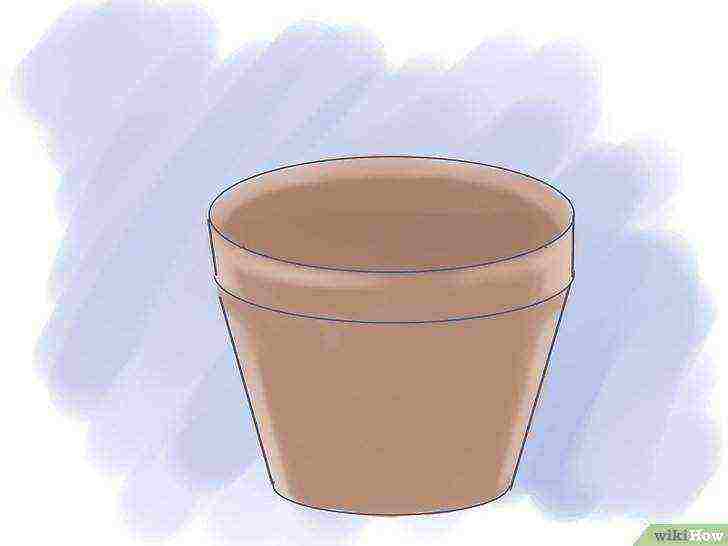
Find a large pot. A pot with a depth of about 30.5 cm and the same diameter is a good place to start. Larger varieties, especially those taller than 90 cm, may require a larger container.
-
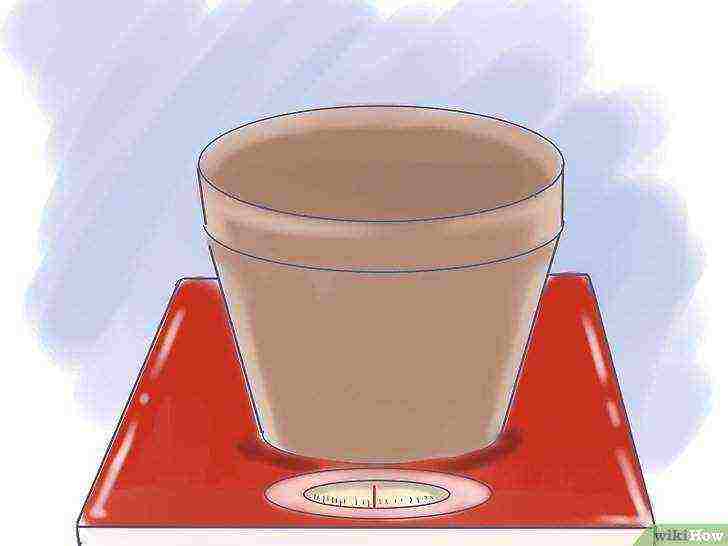
Choose a heavy pot. A light pot may not be stable enough, so choose one that won't tip over under the weight of an adult plant.
-
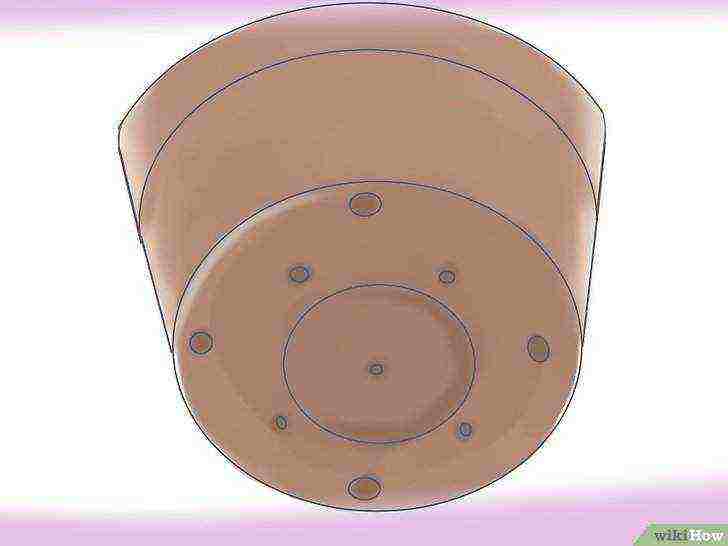
Drill additional drain holes. You can skip this step if your chosen pot already has several holes that allow excess water to drain off quickly. If the holes in the pot are too small or there is only one hole in the middle, you may need to punch a few more holes to improve drainage.
-
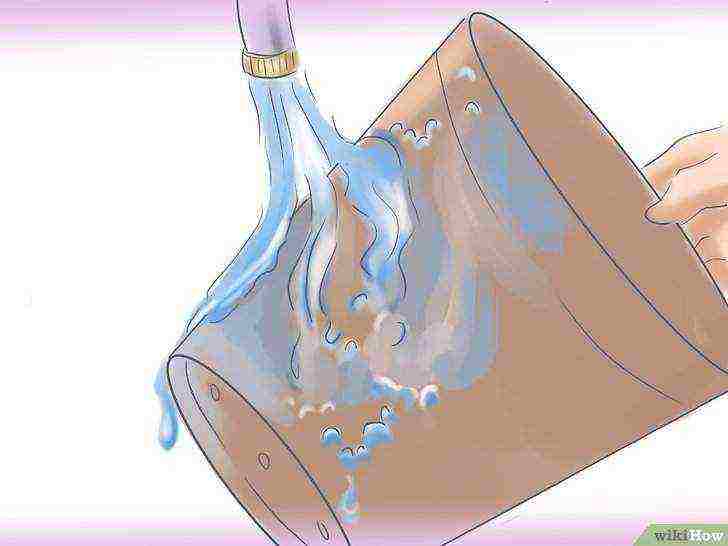
Wash the pot. A dirty pot can be a source of disease or insect eggs. Get rid of this threat by washing it out before planting the plant. All you need is soap and water.
-
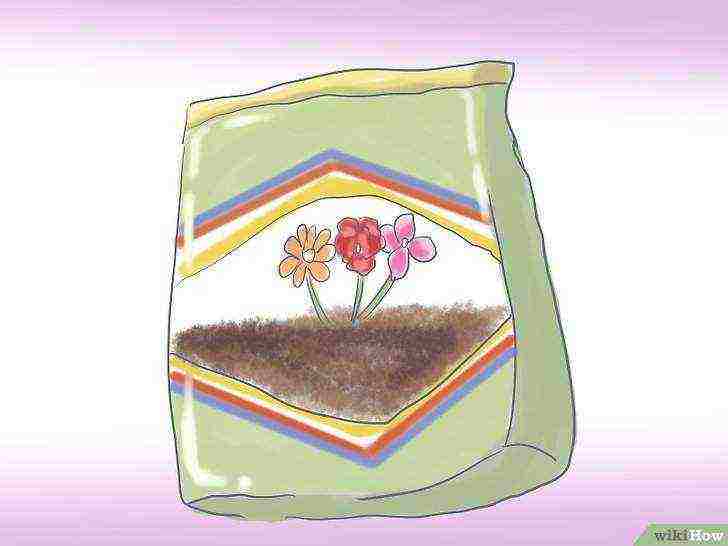
Choose a coarse soil mixture. Standard potted soil is too porous, which can lead to poor bud development. A good mixture will consist of potting soil and garden soil, or potting soil and compost. Alternatively, mixtures of other components - bark, peat and various minerals - may be suitable.
Method 2 Landing
-

Plant the tubers before the roots grow too long. Long roots become tangled and easily damaged when untangled. It will take time for the tuber to grow new roots, and as a result, the growth and flowering of plants can be delayed and be minimal for the season.
-
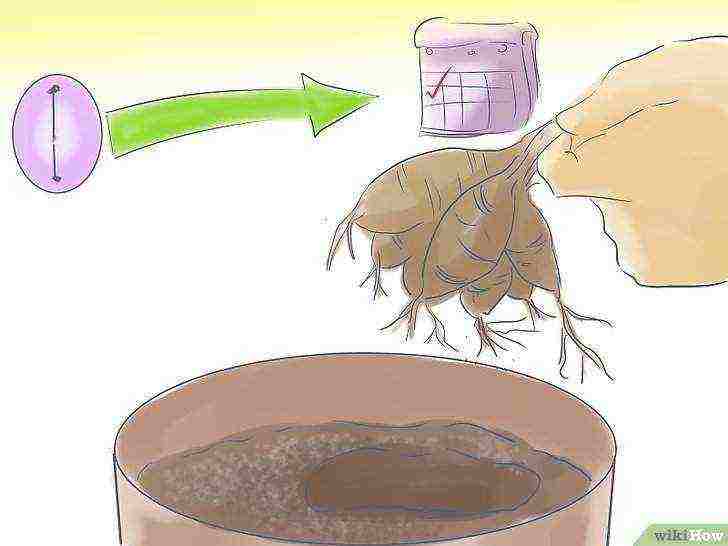 Start in April or May.
Start in April or May.
- If you are planting potted flowers that will stand outside, wait until May (the ground should not freeze through at night).
- If you are growing indoor flowers, you can start planting tubers as early as April.
-
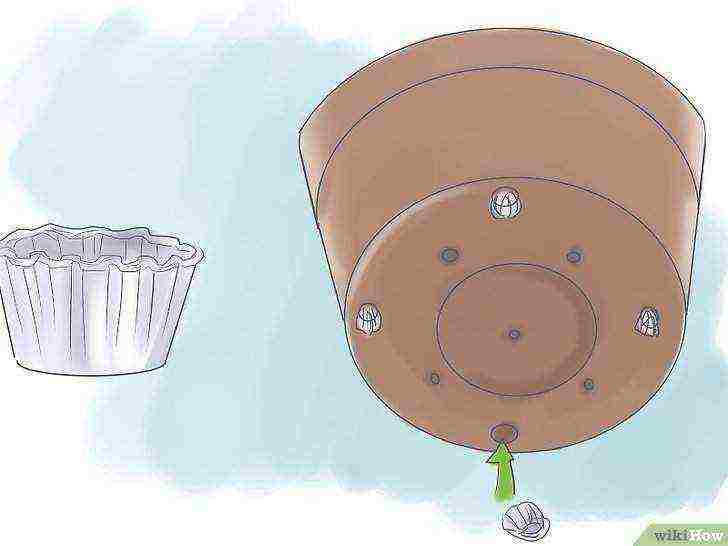
Place one or two biodegradable coffee maker filters in the bottom of the pot, over the holes. The filters will absorb moisture, preventing root flooding. Gravel poured into the bottom of a flowerpot does the same job, but the roots of dahlias need as much space as possible to grow, and filters take up significantly less space than gravel. In addition, the filters will prevent insects from entering the pot through the drainage holes.
-
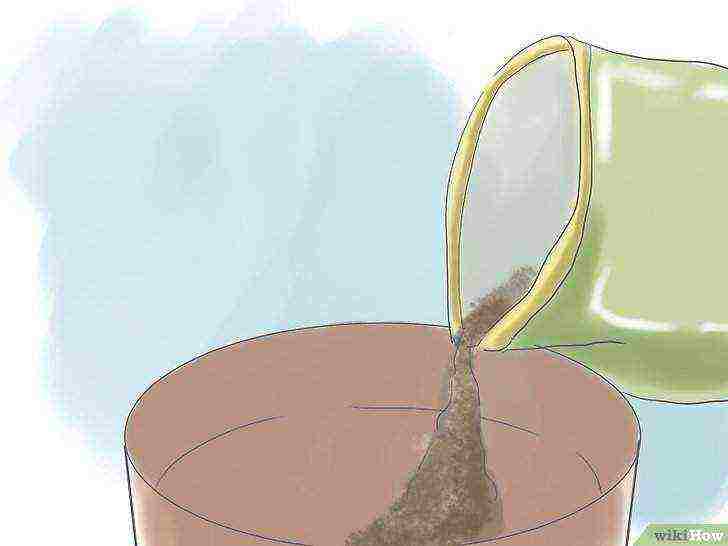 Fill the pot one-third full of the soil mixture.
Fill the pot one-third full of the soil mixture.
Do not tamp it tightly - keep the ground loose.
- If your pot is deeper than 30.5 cm, you may need more soil. Dahlia tubers should be planted to a depth of about 15 cm, and 2.5 cm should remain from the surface of the soil to the top edge of the pot.
-
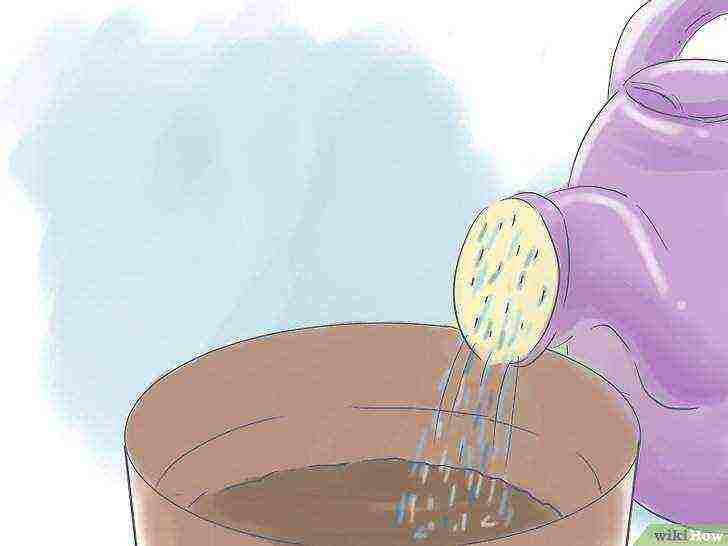
Moisten the soil. It should be exactly wet, not wet.
-
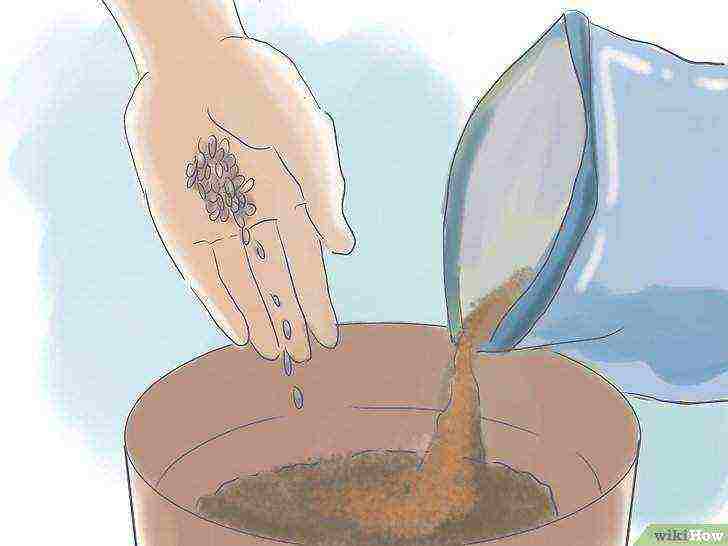 Mix the soil with a handful of bone meal and fertilizer.
Mix the soil with a handful of bone meal and fertilizer.
Dahlias need a lot of nutrients to grow lush. Fertilizers based on fish or algae additionally contain trace elements.
- You can also purchase resin blend from your gardening store and use it in place of bone meal and fertilizer. Follow the directions for use on the packaging.
- If the coffee filters on the bottom of the pot become dislodged when you add a mixture, fertilizer, or bone meal to the soil, shake the soil out of the pot and mix it with the other ingredients. Then put the filters back in place and pour the soil and additives back into the pot.
-

Plant the tuber in the soil. Lay it horizontally and leave at least 6 mm between the tip of the root and the side of the pot. If a peephole has already appeared on the tuber, position it so that the peephole is in the center of the pot and looks up. The stem will grow out of this eye.
-
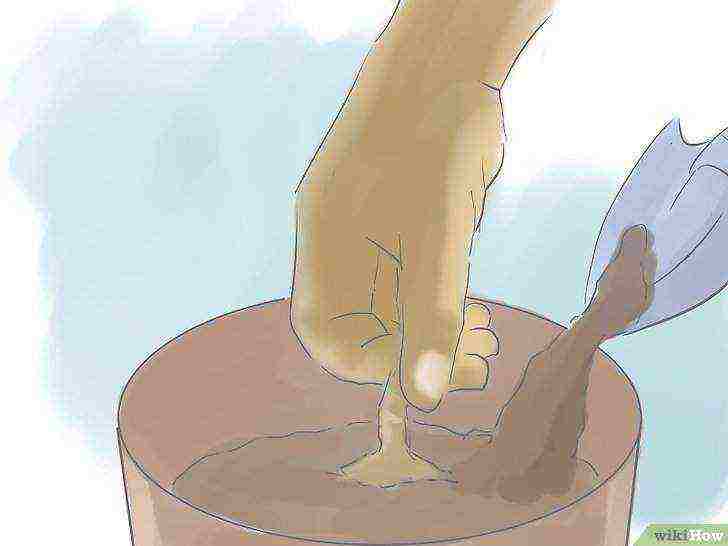
Cover the tuber with pre-moistened soil. Do not bury the tuber deeply yet, just sprinkle it with a minimum amount of soil to watch it grow.
-
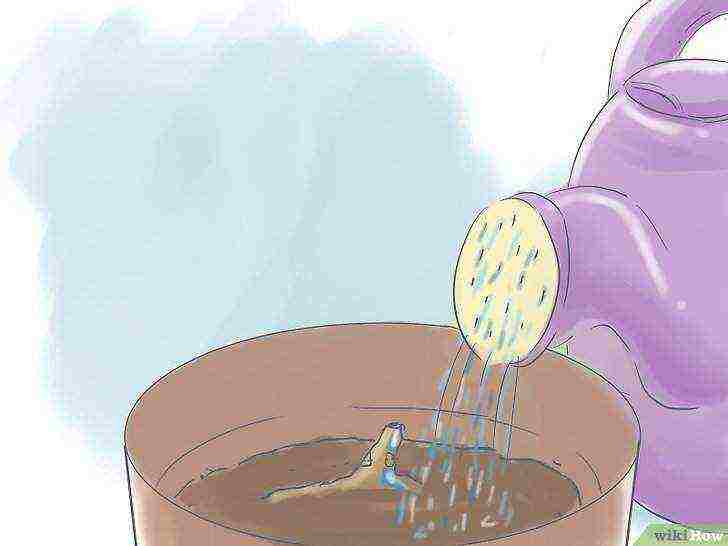
Do not cover the eyes with soil; leave them on the surface. Lightly sprinkle the visible part of the tuber with lukewarm water to moisten it.
-
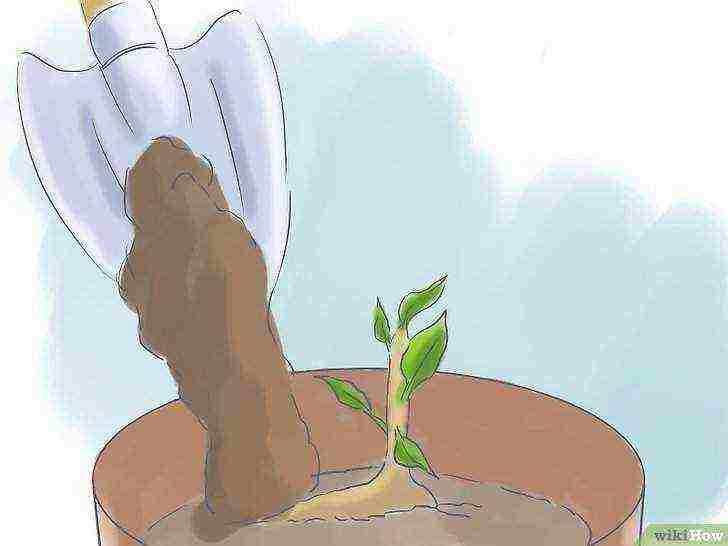
Add soil as the stem grows. Do this carefully so as not to damage the stem, as it is still quite fragile at this stage. Never cover the top leaves. Continue adding soil until only 2.5 cm is left between the surface and the edge of the pot.
-
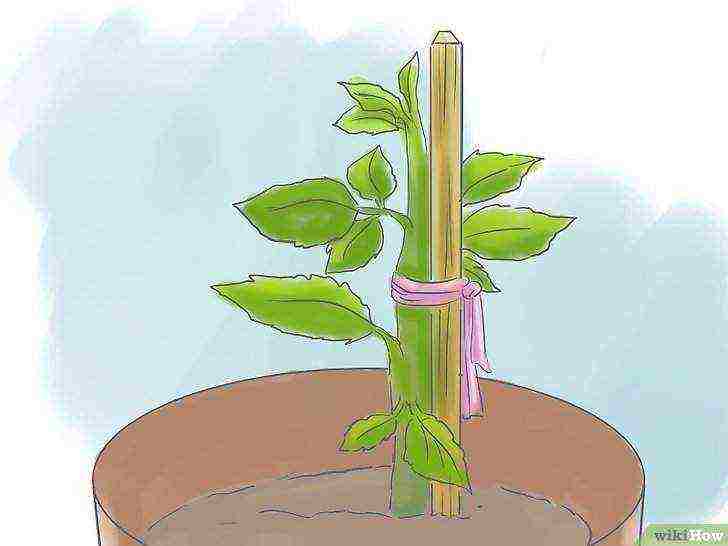
Insert a support into the pot and tie the stem to it. Large varieties of dahlias need extra support to keep the stems from breaking. For most, a 120 cm high support is suitable; the most reliable will be metal.The base should reach the bottom of the pot, and the stand itself should be firmly anchored with soil and / or wire threaded through the holes drilled in the sides of the pot.
Method 3 Care
-
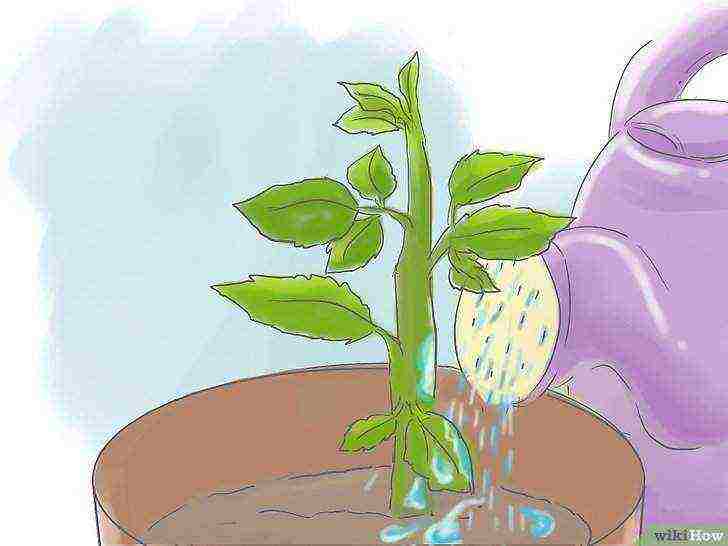
Water the tubers well when the stem rises above the edge of the pot. Provide abundant watering two or three times a week. In dry and hot climates, dahlias require watering every day. However, never overfill them.
-
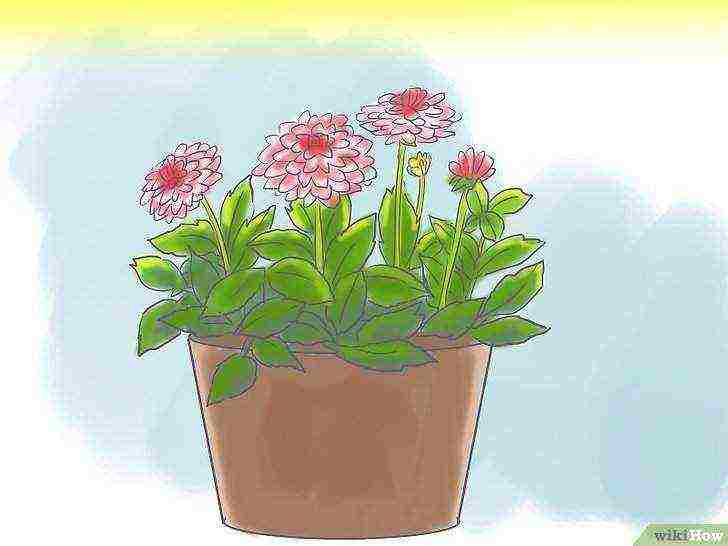
Place the pot in full sun. Dahlias grow best in six to eight hours of direct sunlight.
-
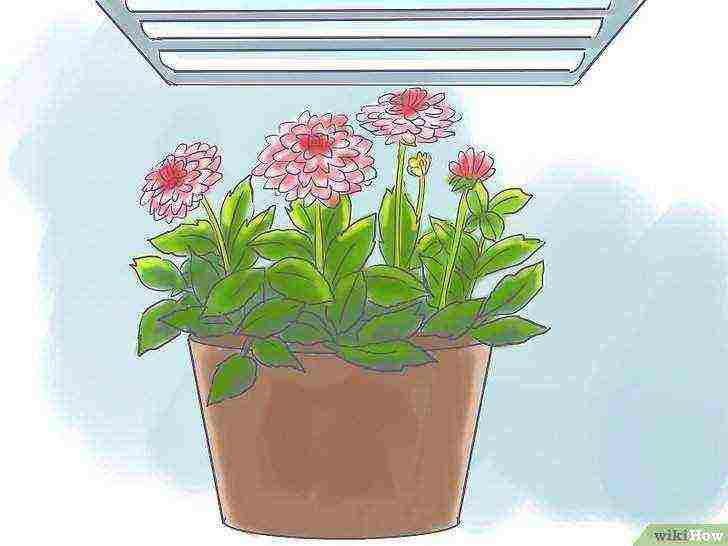
Supplement sunlight with fluorescent lights if you are growing flowers indoors. Household dahlias often receive less sunlight, and special lighting may be needed to stimulate growth. For freshly planted tubers, place a lamp about 15 cm above the top of the pot and raise it as the dahlias grow.
-
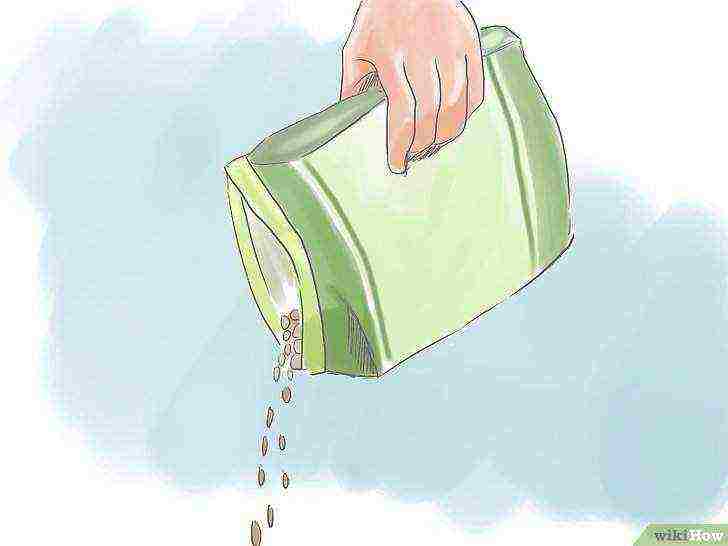
Fertilize biweekly from June to September. Use a fertilizer with a low nitrogen level and avoid overfeeding the flowers.
-
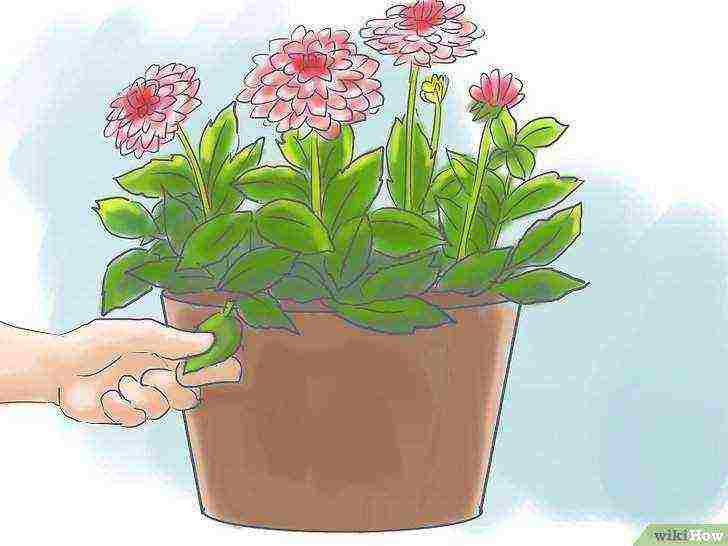
Remove the lower leaves over time (usually mid-July). Removing them will improve air circulation and reduce the risk of powdery mildew.
-

Spray the dahlias with a fungicide or insecticide as needed. Dahlias are harmed by mold, earwigs, slugs, spider mites, aphids and leaf beetles.
Tips
- When cutting dahlias for a bouquet, dip the ends of the stems in hot water. This will help trap moisture inside and extend the life of the flowers.
- If you live in cold climates, let the dahlia tubers winter indoors. Dig up the tubers two weeks after the plants are frozen. Rinse off any dirt and let dry throughout the day. Then wrap in paper and store in a cool, dry place.
What do you need
- Dahlia tubers
- Large heavy pot
- Priming
- Low nitrogen fertilizer
- Fluorescent lamp
- Metal support
Article Information
This page has been viewed 22,844 times.
Was this helpful?
Dahlias are popular flowering garden plants from the Asteraceae family, on rather tall stems, with bright flowers of various colors from pink to bright red.
These flowers are also grown indoors using special potted varieties that reach only 30 cm in height. It is only important to follow the rules of care.
Dahlia growing
Location and lighting
These flowers are light-loving, but in the hottest hours in summer they are shaded from the sun. It is best to place the pot on the east or west window.
The room in which the plant is located must be well ventilated; in the summer it can be taken out onto the balcony or into the garden, protecting it from drafts and wind.
Temperature
Dahlia is not very thermophilic. In summer, the temperature should not exceed + 18 ° С, in winter it is lowered to + 12-15 ° С.
Watering and humidity
Throughout the year, abundant watering is required, in winter the amount of water is slightly reduced, but still they do not allow the soil to dry out. For watering, the water is defended for 1-2 days.
It does not require high humidity; it is enough to periodically spray the leaves with water at room temperature. If the air is too dry, pests can appear on the plant, and the leaves also turn yellow.
Fertilizer
Top dressing is required a few days after transplanting, this is done in late spring and summer with an interval of 10 days.
The best fertilizer is a mixture of mullein infusion (1 part to 10 parts of water) with the addition of superphosphate and nitrogen fertilizers (they are taken for 10 liters of water 20 g).
Periodic feeding with superphosphate mixed with wood ash is also suitable (for 10 liters - 50 g of the product).
The use of fertilizers has a beneficial effect on flowering - large and bright flowers are formed. Since September, feeding is not carried out.
Transplant and reproduction
They practically do not transplant, since at the end of flowering, the ground part of the plant usually dies off.
Dahlia propagates by seeds that form on flowers. They are collected, dried a little and planted in the soil in the spring (a mixture of peat and sand in a ratio of 3: 1), when 2 true leaves grow on the seedlings, they are planted in separate pots.
The second way of reproduction is with cuttings. To do this, cut off the tops of the stems, place them in a container with water or a mixture of peat and sand. For rooting, maintain a temperature of + 20-25 ° C.
Transplanting the plant with tubers, they are cut into several parts so that a piece of the root collar with eyes remains on each. Tubers are planted in the ground in May-June.
Pests and the fight against them
Dahlias are threatened by pests such as aphids and spider mites. To get rid of them, plants are sprayed with infusion of onion peel, garlic, dandelion or tobacco. In case of severe damage, special insecticides are used.
Share with your friends on social networks

